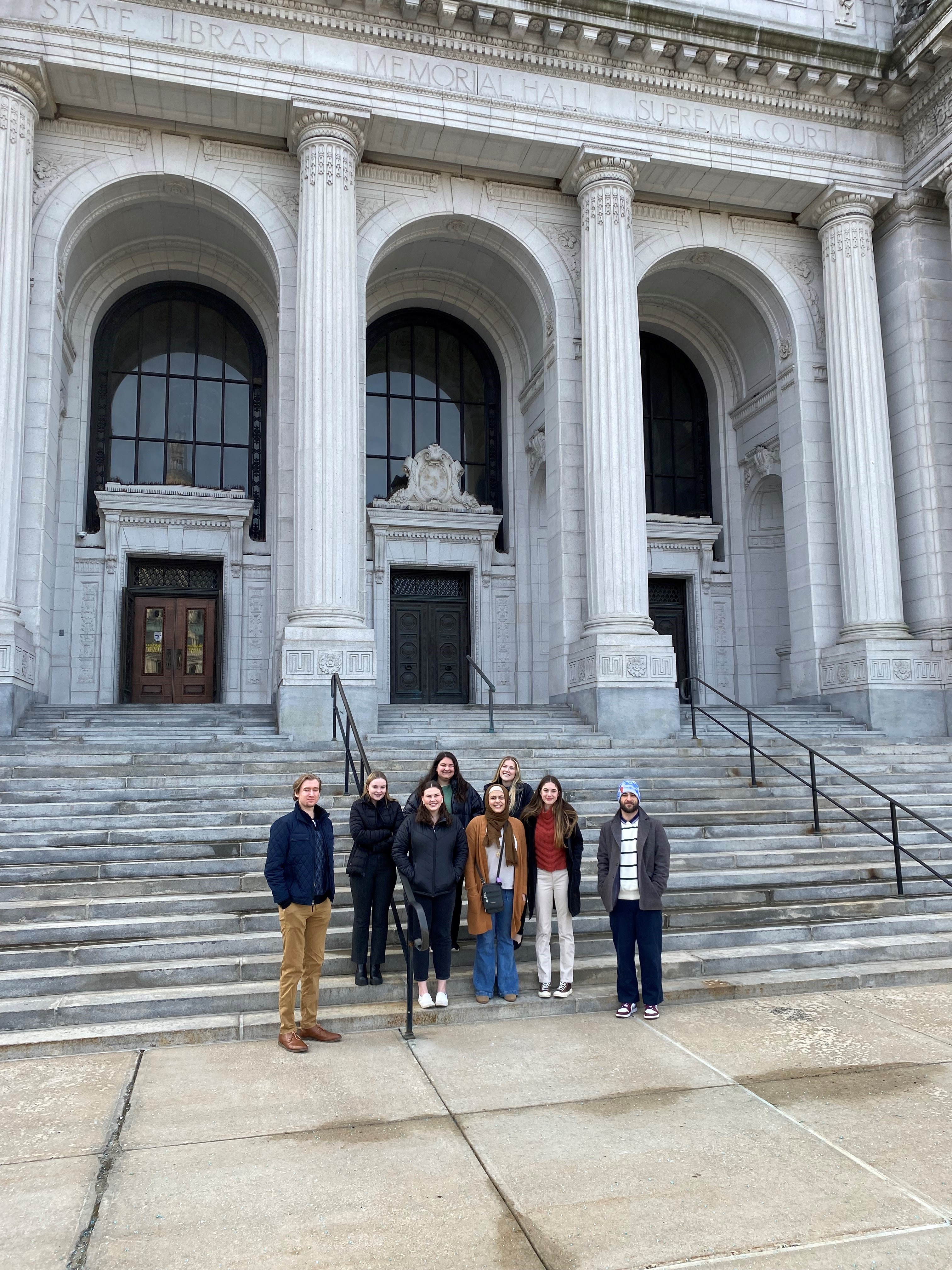- Apply
- Visit
- Request Info
- Give
Published on February 27, 2023
From the Classroom to the Courtroom

When we arrived, we entered the swinging doors leading to the massive courtroom. To say the courtroom is intimidating would be an understatement. The room itself situated to the right of the main entrance has prolific high ceilings that stretch thirty-five feet tall, the wood seats covering the back half of the court area. The Connecticut seal with our state’s motto lays in the center of the royal blue carpet near the counsel’s tables. Unlike the United States Supreme Court which has a one year long term, the Connecticut State Supreme Court has eight two-week terms throughout the year and hears two cases a day. The cases that we heard on the 22nd were Aaron Lynch et al. v. State Of Connecticut et al. and Emmett Escobar-Santana et al. v. State Of Connecticut. Both cases had to do with medical malpractice relating to women’s healthcare. I highly recommend looking into both cases for more information.
My classmates and I listened intently as both the attorneys for the Petitioners and Respondents made their arguments to the seven justices present for each case. At times the justices would interrupt to ask a question for more clarification or how their argument relates to the legal question at hand. The preparation required for this takes months to perfect and even then, the attorneys can still be stumped by a question the justice throws at them. The connection between these cases in relation to Constitutional law has helped my classmates and I understand the importance of how the interpretation of state laws and any Constitution, state or federal, can affect the outcome of future cases. It also relates to the cases before and whether the Court should look to them for application in the present or if they should create a new precedent. Overall, the experience to hear cases at this level has been extremely important to my interest in the field of law and I’m grateful to Dr. Broscious for giving my classmates and I the opportunity to learn more about the legal system and how it applies to our class.Written by Nicole Gaston

